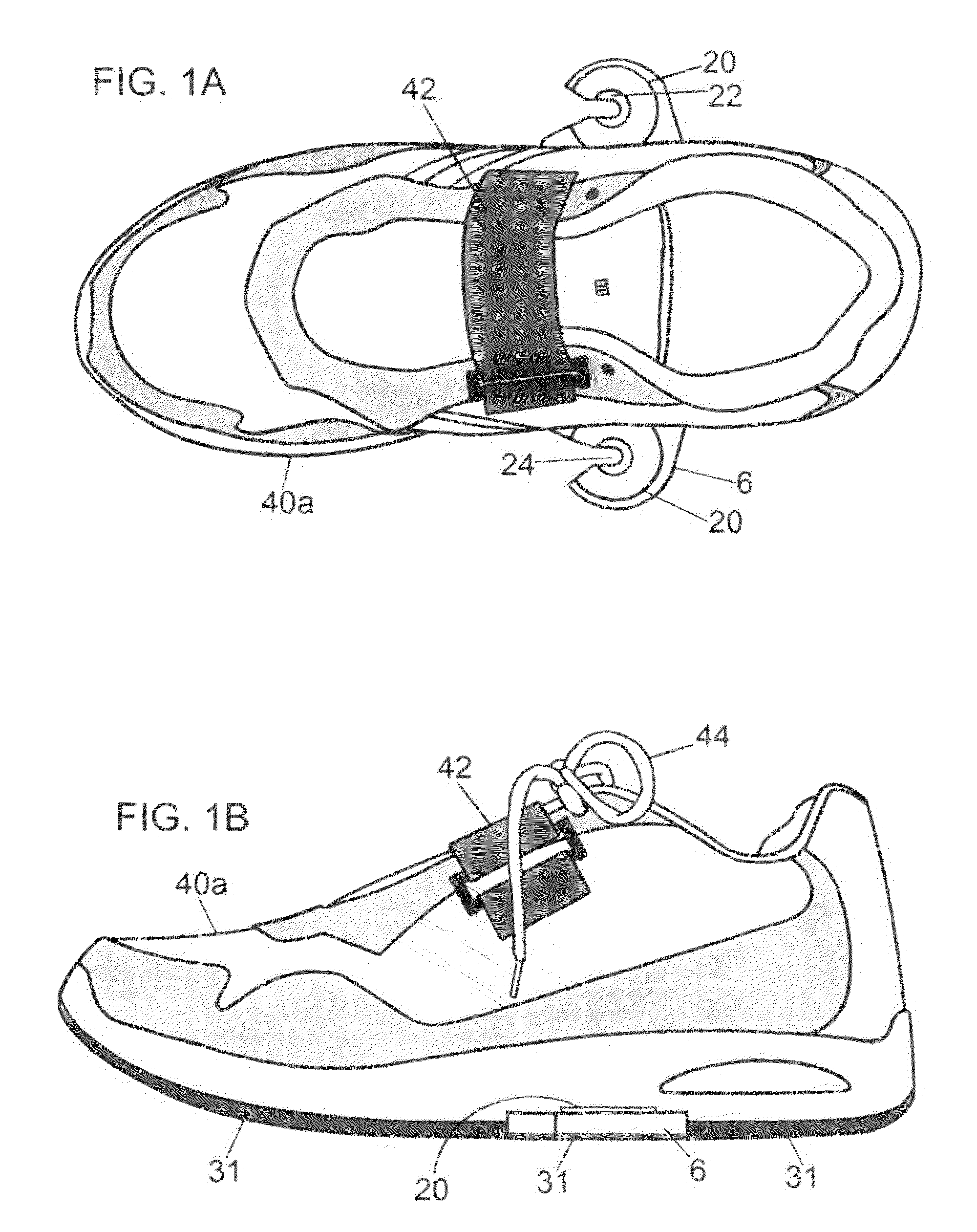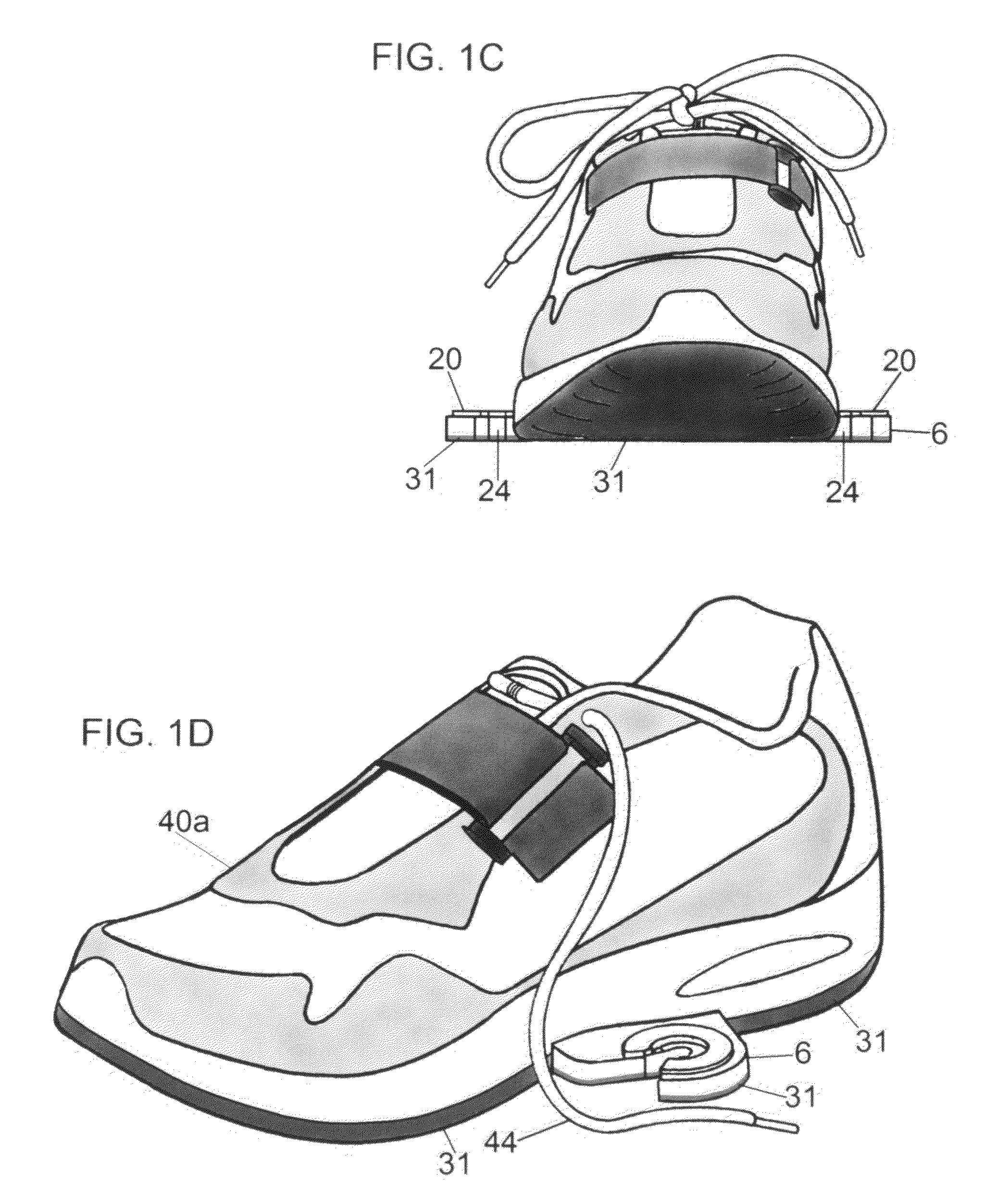Weight lifting shoes
a technology for shoes and weights, applied in the field of weight lifting, can solve the problems of affecting the use of other weight lifting machines such as donkey kick machines, occupying a lot of room in the user's house, and fewer leg exercises and much more difficult coordination
- Summary
- Abstract
- Description
- Claims
- Application Information
AI Technical Summary
Benefits of technology
Problems solved by technology
Method used
Image
Examples
Embodiment Construction
[0038]A preferred embodiment of the shoe of the present invention is illustrated in FIGS. 1A (top view), 1B (side view), 1C (front view), and 1D (perspective view).
[0039]The shoe 40a is substantially normal in every way but further consists of a sturdy heel cup 5 hidden in the heel of the shoe to help to keep the shoe 40a on the user's foot and a means of tightening the heel cup 5 comfortably around the user's heel, in this case the shoe lace 44. FIG. 18 shows how the shoelace 44 tightens the heel cup 5. A separate means for making the shoe fit the user's foot should be used so that a comfortable fit can be achieved independently from the tightness of the heel cup 5. A hook and loop (Velcro®) shoe strap 42 is used in this example to make the shoe fit comfortably. In the preferred embodiment the strap should describe a Z shape to cover more of the user's foot. The heel cup is shown in FIGS. 16A, 16B, 17, and 18.
[0040]The shoe 40a further consists of hardware in the form of tabs 6 pro...
PUM
 Login to View More
Login to View More Abstract
Description
Claims
Application Information
 Login to View More
Login to View More - R&D
- Intellectual Property
- Life Sciences
- Materials
- Tech Scout
- Unparalleled Data Quality
- Higher Quality Content
- 60% Fewer Hallucinations
Browse by: Latest US Patents, China's latest patents, Technical Efficacy Thesaurus, Application Domain, Technology Topic, Popular Technical Reports.
© 2025 PatSnap. All rights reserved.Legal|Privacy policy|Modern Slavery Act Transparency Statement|Sitemap|About US| Contact US: help@patsnap.com



